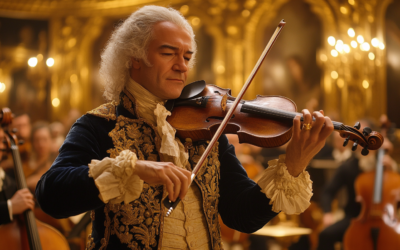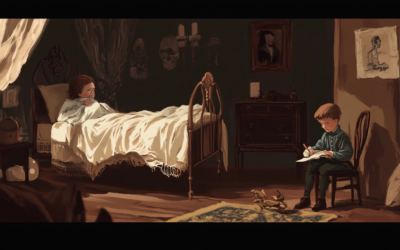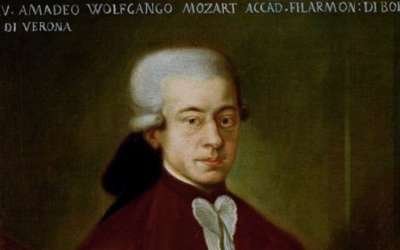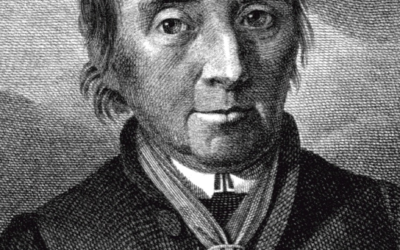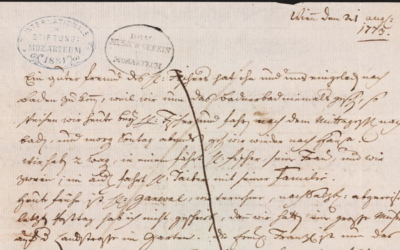The Borrowed Simplicity
Mozart’s Canons K.555, K.557, and K.562
The three canons K.555, K.557, and K.562, often dismissed for their apparent simplicity, actually offer a fascinating insight into Mozart’s creative process and his reliance on earlier models, particularly the works of Antonio Caldara.
Caldara, a celebrated composer of the early 18th century, served as vice Kapellmeister in Vienna, where his contrapuntal mastery influenced many musicians, including the Mozart family. In fact, Leopold Mozart owned copies of Caldara’s canons, and it is well-documented that Mozart drew heavily on these pieces when composing his own.
The Italian texts of these three canons match those of Caldara’s original works, and Mozart’s melodies show striking similarities with Caldara’s. While Mozart simplified Caldara’s more intricate structures to suit the fashionable galant style of his time, he nonetheless retained the harmonic richness and rhythmic elegance of the originals.
In K.557, for instance, we find sketches that show Mozart reworking Caldara’s material almost directly, borrowing not just the form but also the chromaticism and thematic gestures.
These canons, though seemingly modest, exemplify how Mozart absorbed and transformed Caldara’s complex contrapuntal language into something more accessible, yet still deeply rooted in the Baroque tradition.
Mozart: The Fall of the Gods
This book compiles the results of our studies on 18th-century music and Mozart, who has been revered for over two centuries as a deity. We dismantle the baseless cult of Mozart and strip away the clichés that falsely present him as a natural genius, revealing the contradictions in conventional biographies. In this work, divided into two parts, we identify and critically analyze several contradictory points in the vast Mozart bibliography. Each of the nearly 2,000 citations is meticulously sourced, allowing readers to verify the findings. This critical biography of Mozart emerges from these premises, addressing the numerous doubts raised by researchers.
"Mozart didn’t just borrow from Caldara—he simplified and reworked his compositions, but the original complexity of the Italian master still shines through."
Mozart: The Fall of the Gods
The three canons K.555, K.557, and K.562 stand out for their striking simplicity, forming a distinct group in Mozart’s output. Their Italian texts link them to the canons of Antonio Caldara, an Italian composer who served as vice Kapellmeister at the imperial court in Vienna for many years. Notably, the Mozart family owned copies of Caldara’s canons, with one of these manuscripts labeled “Canoni di Caldara” in Leopold Mozart’s handwriting. It’s worth noting that Mozart’s own melodies are not entirely dissimilar to those of Caldara.
Musically, these canons reflect the more elegant and simplified style of the galant era, in contrast to Caldara’s more intricate contrapuntal structures. Two of the canons are dated September 2, 1788, but there is reason to believe they might originate from an earlier period. They adopt the Italian texts from three of the seven Caldara canons that Leopold Mozart copied from the Divertimenti musicali per campagna: Lacrimoso son io (K.555), Nascoso è il mio sol (K.557), and Caro bell’idol mio (K.562).
K.555, in particular, consists of just two lines: “Lacrimoso son io, Perduto ho l’idol mio.” While the structure is correct in its basic form, the exceptions found are text-driven, with proper contrapuntal rules respected and chromatic passages handled carefully. Caldara, a master of early 18th-century counterpoint, influenced composers across Europe, including Johann Sebastian Bach, who copied Caldara’s Magnificat, adding violin parts. Leopold Mozart, too, was deeply impressed by Caldara’s work, as were Beethoven and Brahms, who also transcribed his contrapuntal models.
The canon K.557, Nascoso è il mio sol, written in F minor—a key that Mozart rarely used for his canons, though frequently found in Caldara’s works—is arguably the most revealing in terms of understanding Mozart’s process. Early sketches of this canon, published in the Neue Mozart-Ausgabe (NMA), reveal Mozart’s method of reworking pre-existing material. His adaptation, simple in harmony but rhythmically engaging, can be traced back to Caldara’s canons. The fundamental model, comprising a three-bar pattern for four voices, mirrors Caldara’s Se viver non poss’io, also in F minor. When comparing the first six bars of K.557 to Caldara’s, the resemblance is unmistakable.
In fact, by simplifying Caldara’s original three-voice canon and removing a few notes, Mozart’s adaptation becomes evident. Despite these reductions, Caldara’s version remains more complex, but when only the principal notes are considered, Mozart’s reliance on Caldara’s structure becomes obvious. The rhythmic patterns, along with the literal text, mirror Caldara’s style. Another canon of Caldara’s, Mia Clori addio, further supports this claim, showing identical rhythmic figures and the same final cadence.
What stands out in K.557 is the use of an ascending appoggiatura (C-Db) on strong beats—a stylistic trait common in Caldara’s compositions. The chromatic passages that Mozart retained in his final version seem to be directly copied from Caldara’s example or similar canons among the approximately 600 Caldara composed. Even the chromaticism Mozart employed appears identical when transposed an octave lower.
Mozart’s approach here wasn’t mere copying; he masked Caldara’s original melodies by shifting thematic fragments between voices. His extensive revisions show how much he struggled with these canons. In essence, while Caldara’s tonal structures are far more complex, Mozart reworked them into something simpler, yet still rooted in Caldara’s more intricate models.
Each of Mozart’s canons displays a distinct connection to his operatic bel canto style: K.555 stands out for its melismatic qualities, K.557 for its use of chromatic harmonies and suspensions, and K.562 for its thematic borrowing from Caldara’s original. In fact, K.562 likely suffered the most during the copying process, with numerous errors introduced, as shown by the critical points highlighted below.
You May Also Like
The Violin Concertos: Mozart’s Borrowed Genius
Mozart’s violin concertos are often celebrated as masterpieces, but how much of the music is truly his? This article delves into the complexities behind the compositions and challenges the authenticity of some of his most famous works, revealing a story of influence, imitation, and misattribution.
#2 The Hidden Truth of Mozart’s Education
In this video, we uncover the hidden truth behind Wolfgang Amadeus Mozart’s early education and challenge the long-held belief in his effortless genius. While history often celebrates Mozart as a child prodigy, effortlessly composing music from a young age, the reality is far more complex.
The London Notebook
The London Notebook exposes the limitations of young Mozart’s compositional skills and questions the myth of his early genius. His simplistic pieces, fraught with errors, reveal a child still grappling with fundamental musical concepts.
The Mozart Question
In this revealing interview, we delve into the lesser-known aspects of Wolfgang Amadeus Mozart’s life, challenging the long-standing myth of his genius. A Swedish journalist explores how Mozart’s legacy has been shaped and manipulated over time, shedding light on the crucial role played by his father, Leopold, in crafting the career of the famed composer.
Georg Nissen and the Missing Notebooks
After Mozart's death, his widow, Constanze, found a steadfast partner in Georg Nikolaus von Nissen, a Danish diplomat who dedicated his life to preserving the composer's legacy. Nissen not only compiled an extensive biography of Mozart but also uncovered and...
Letters Under Surveillance
In a world without privacy, Leopold Mozart’s letters were carefully crafted not just to inform but to manipulate perceptions. His correspondence reveals a calculated effort to elevate his family’s status while avoiding any mention of failure or controversy.


